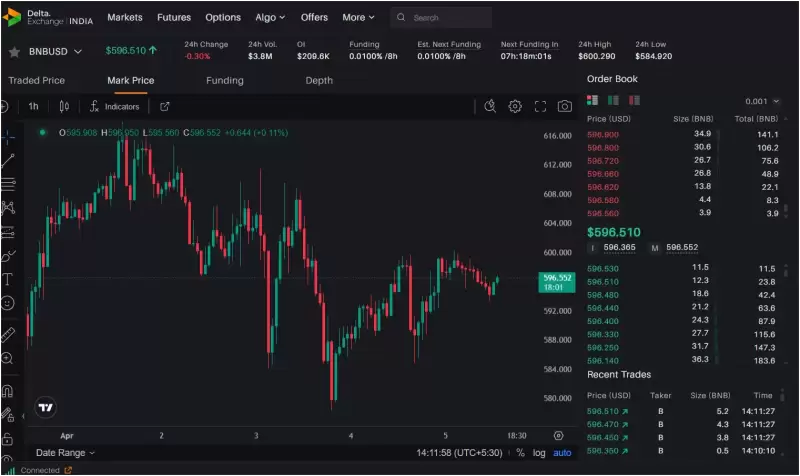 |
|
 |
|
 |
|
 |
|
 |
|
 |
|
 |
|
 |
|
 |
|
 |
|
 |
|
 |
|
 |
|
 |
|
 |
|
Cryptocurrency News Articles
Bitcoin BTCUSD mining revenues hit $3.7 billion in Q4 2024, up 42% from the prior quarter
Mar 26, 2025 at 03:35 am
Bitcoin BTCUSD mining revenues hit $3.7 billion in the fourth quarter of 2024, a 42% increase from the prior quarter, and are approaching similar levels of

Bitcoin BTCUSD mining revenues reached $3.7 billion in the fourth quarter of 2024, a 42% increase from the prior quarter, and are approaching similar levels of around $3.6 billion in Q1 2025, according to data from Coin Metrics.
The revenue buildup suggests miners’ incomes are stabilizing after the Bitcoin network’s “halving” in April 2024 reduced mining rewards from 6.25 BTC to 3.125 BTC per block. Halvings occur every four years and cut the number of BTC mined per block in half.
“With almost one year elapsed since Bitcoin’s 4th halving, miners have endured a period of stabilization, adapting to reduced block rewards, tighter margins, and shifting operational dynamics,” Coin Metrics said in its Q1 2025 Data Special report.
This recovery could be cut short if ongoing trade wars disrupt miners’ business models, Ben Yorke, VP of Ecosystem at WOO, a Web3 startup, told Cointelegraph.
“Should semiconductor tariffs return, Bitcoin mining will face higher costs, concentrating power among major players and forcing smaller operations to shut down,” Yorke said.
CoinDesk reporter Ben Raviv also highlighted the role of new technologies in shaping the future of Bitcoin mining.
After the halving: Adapting and diversifying
Bitcoin miners have struggled in 2025 as a worsening macroeconomic climate and the cryptocurrency market downturn have put additional pressure on their business models, which were already strained by the network’s April halving, according to a March 3 JPMorgan research note. However, well-capitalized miners have managed to adapt, and they are still deploying capital to expand their operations, as evidenced by several recent announcements.
For instance, in January, Bitcoin’s hashrate — a measure of the total computing power securing the network — reached a new all-time high, according to CoinWarz data. Meanwhile, common adjustments that miners have made include “upgrading to more energy-efficient ASICs, [and] relocating to regions with cheaper and more abundant renewable energy,” such as Africa and Latin America, Coin Metrics said. ASICs are specialized computer hardware used in Bitcoin mining.
Additionally, “miners are also diversifying into AI data-center hosting as a means to expand revenue streams and repurpose existing infrastructure for high performance computing,” according to the report. For instance, Bitcoin miner Core Scientific (NASDAQ:COSM) is now providing 200 megaWatts of hardware capacity to support CoreWeave’s artificial intelligence workloads.
Greater transaction activity would help sustain economic incentives for miners post-halving, according to Coin Metrics. “Over time, increased participation from higher-value or more time-sensitive activity could help drive stronger transaction fees, sustaining miner incentives as block rewards decline.”
However, for now, “[t]ransactions below $100 currently represent ~60% of Bitcoin’s total transaction count,” according to Coin Metrics. This is partially because holders are increasingly treating Bitcoin as a buy-and-hold asset, rather than a medium of exchange.
“Bitcoin’s supply velocity, measuring the ratio of adjusted transfer volume to its current supply (rate of turnover), has declined over time, reinforcing the idea that BTC is increasingly held rather than transacted,” the report noted.
Disclaimer:info@kdj.com
The information provided is not trading advice. kdj.com does not assume any responsibility for any investments made based on the information provided in this article. Cryptocurrencies are highly volatile and it is highly recommended that you invest with caution after thorough research!
If you believe that the content used on this website infringes your copyright, please contact us immediately (info@kdj.com) and we will delete it promptly.
-

-

-

-

-

-

-

-

- Coinbase Has Implemented Crucial Enhancements to Its Solana Network Infrastructure
- Apr 18, 2025 at 05:35 pm
- Coinbase has implemented crucial enhancements to its Solana network infrastructure to improve its speed, resilience, and scalability. The crypto exchange has introduced several technological refinements into Solana as part of its efforts to increase transaction processing capabilities.
-




























































